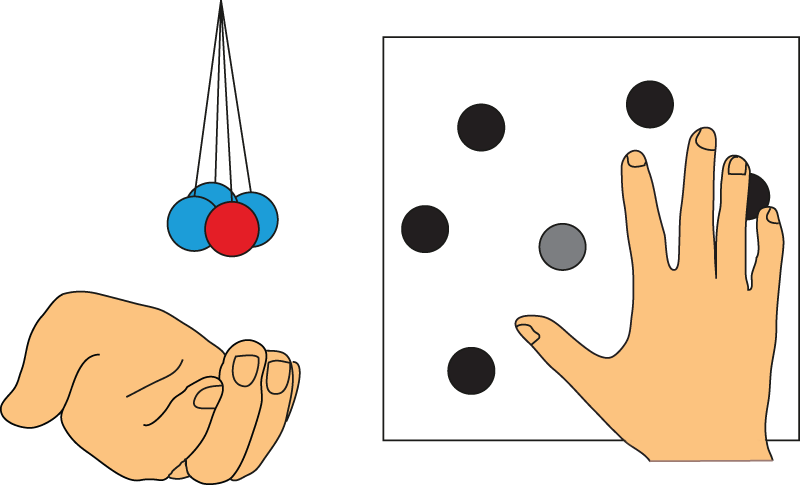Current Projects
Perception of object properties
When we pick up an object, we can perceive the properties of this object, such as its weight. The perception of object properties is not always veridical, but can be influenced by other properties, or movements. In this project I mainly investigate the perception of object weight in relation to lifting parameters and in the context of the size–weight illusion.
Use of sensory information for planning and controlling movements
Sensory information is vital for planning movements, but also to control the motion online by feedback processes. For example, when picking up an object, the forces applied by the fingertips have to be scaled to the weight of the object. Object information, such as size or material, can be used to make a motor plan. If the initially planned forces are incorrect, online sensory feedback loops can be used to correct the movement.
I investigate how (multi-)sensory information is used to guide or correct movements and how this information can be used to plan future movements. To do this, I use differently weighted cubes, force sensors and a virtual reality environment. Virtual reality enables me to investigate the contribution of haptic and visual information independently.

Interactions between action and perception
Perception and action processes are closely related, where sensory information not only guides actions, but actions also affect perception. In my projects, I investigate how action goals or movements influence perception of objects and how perceptual information is used to control actions, for example when learning new associations between perceptual cues and precise movement parameters. In addition, I study in which contexts perception and action show similar effects and when they function differently.
Neural mechanisms of action and perception
To determine the underlying neural mechanisms of action and perception processes and their interactions, I use transcranial magnetic stimulation (TMS). This is a form of non-invasive brain stimulation that can be used to determine which brain areas are causally involved in a specific task or process. With this tool, I can temporarily disrupt or measure processes in a specific brain area. If this area is involved in a specific task, such as force control or sensory processing, a change in behavioural performance can be measured.

Other projects
In collaboration with dr. Guy Rens, currently working at Western University in London, Canada, we investigate how observation of actions performed by others can aid in motor planning of one’s own movements.
PhD Projects
Haptic perception of object properties
When perceiving an object using your sense of touch, some object properties are processed more efficiently than others. Such properties are immediately detected among others whereas other properties are much more difficult to perceive. As part of my PhD thesis, I have found that the haptic properties movability, hardness and softness were processed very efficiently. In addition, I found that combining information about texture and shape could improve object detection, but salient properties could also disrupt the detection of other properties.

Haptic exploratory movements
Haptic perception is an active process: you move your hand to better perceive the properties of the object you are exploring. These exploration movements are adapted to the properties you want to perceive. How these movements are adapted when searching for a specific object among others is a question that was investigated in this project.
